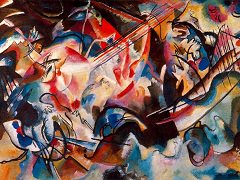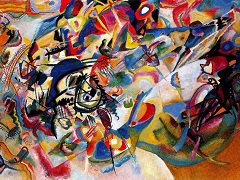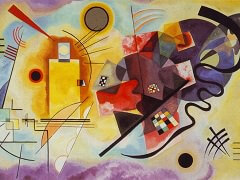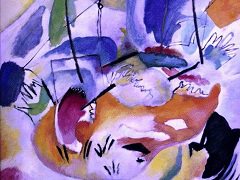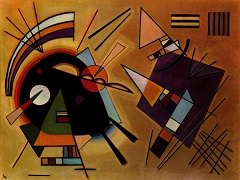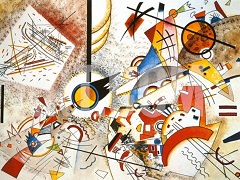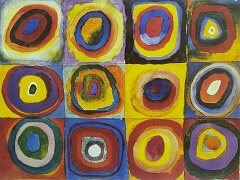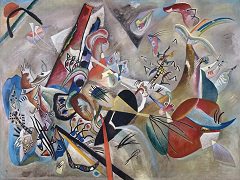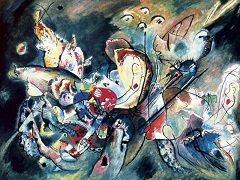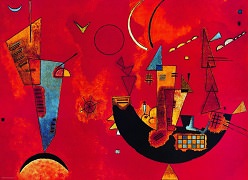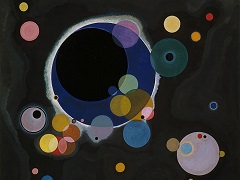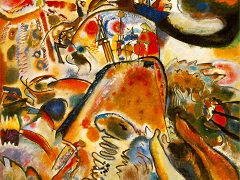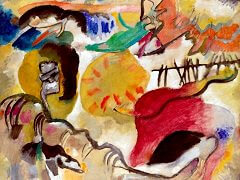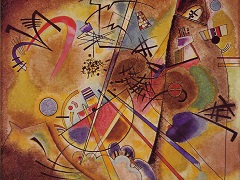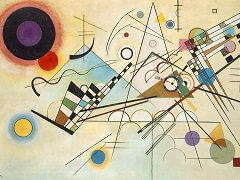Colourful Ensemble, 1938 by Wassily Kandinsky
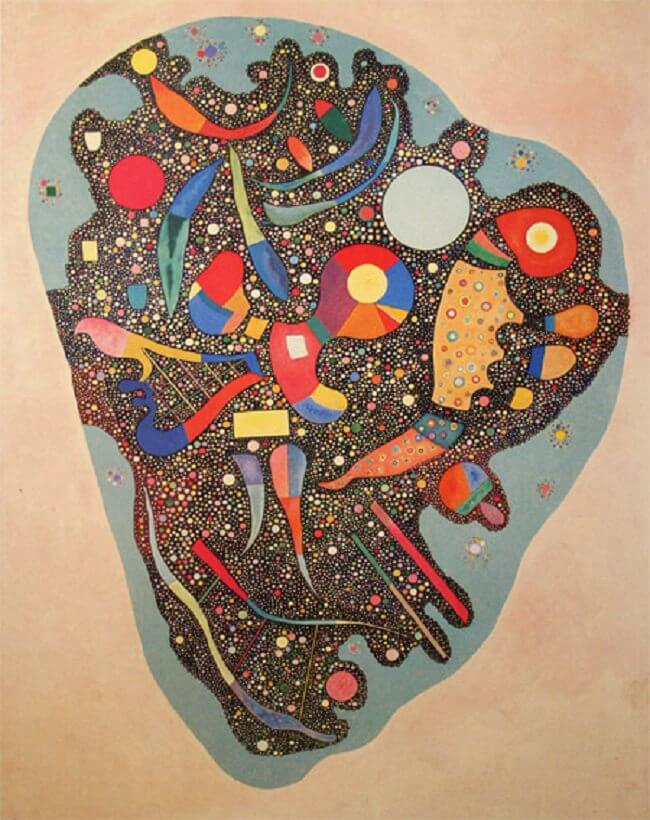
The comprehension of nonobjective forms is not a matter of reason although the "language of the eye" has its own logic. Paul Klee called it bildnerisches Denken - thinking in pictorial terms. Some of the motifs in Colourful Ensemble are fairly easy to understand, as, for instance, the tiny jewel-like shapes in the blue border. They look like a constellation in a microcosm, with one or more suns and their satellites.
Other motifs do not permit this simplistic kind of associative interpretation because they evidently do not represent or resemble anything. In order to appreciate their beauty one must be able to enjoy their specific qualities as form and color.
Again and again Kandinsky tried to explain in simple terms what he thought about his abstract vernacular:
A white horse or a white goose cause two quite different reactions. In this case we have: white plus horse on the one hand or white plus goose on the other. An isolated white which is not related to any object produces a pure inner sound. So does the horse, and so does the goose. White cloud. White glove. White fruit bowl. White butterfly. White tooth. White wall. White stone....
The geometrical outline of a given color offers a greater variety for producing pure vibrations than the contours of any given objects, which always speak more imposingly and restrictedly because of the fact that they cause their own intrinsic responses (horse, goose, cloud). However, like colors, those geometrical or free outlines that are not tied to objects bring about effects that are less punctilious and limited than those of an object. They are freer, more elastic and more "abstract." These abstract shapes have neither a belly like a horse nor a bill like a goose. If you want to subordinate an object to your artistic concept you have to change or restrict its natural borders. In order to elongate a horse you have to pull it by its head or tail. That's what I did before I discovered the possibility of freeing myself from the object.
But in the same manner as a composer can communicate his emotions about a sunrise without using the notes of a crowing cock, a painter has purely pictorial means by which to portray his impressions of a morning without having to paint a cock.

